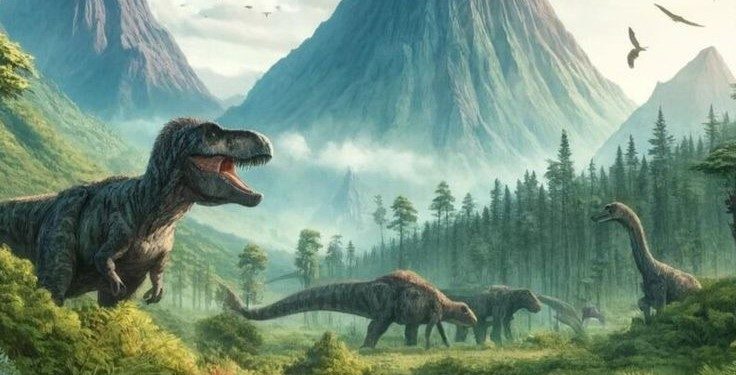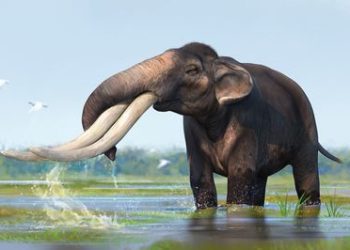Jakarta, Indonesia Sentinel — Hundreds of millions of years ago, long before humans roamed the planet, dinosaurs ruled Earth, thriving in diverse forms and sizes. Today, an extraordinary discovery through fossilized feces has shed light on the reasons behind their evolutionary success.
Published in the journal Nature, the study is the result of an international research collaboration led by Uppsala University in Sweden, alongside experts from Norway, Poland, and Hungary.
Using cutting-edge synchrotron imaging technology, researchers analyzed fossilized feces—known as bromalites—in unprecedented detail, uncovering critical clues about prehistoric ecosystems.
“Piecing together ‘who ate whom’ in the past is true detective work,” said lead author Martin Qvarnström, a paleontologist at Uppsala University, cited from CNN. “Understanding what animals ate and how they interacted with their environment helps us understand what enabled dinosaurs to be so successful.”
The study examined over 500 bromalite samples collected over 25 years from Poland’s basins, dating from the Late Triassic to Early Jurassic periods, around 247 to 200 million years ago. These bromalites included coprolites (fossilized feces) and regurgitalites (fossilized vomit), offering insights into the diets and behaviors of prehistoric creatures.
Advanced 3D scanning at a synchrotron radiation facility in Grenoble, France, allowed scientists to analyze the internal structures of the fossils at a molecular level. The team identified remnants of fish, insects, plants, and even crushed bones, providing evidence of a complex food web.
Five Key Evolutionary Phases
The findings outline five major stages in dinosaur evolution. Early ancestors were omnivores, consuming both plants and meat. These species eventually diverged into the first herbivorous and carnivorous dinosaurs.
A pivotal shift occurred during a period of volcanic activity that spurred plant diversity, which in turn gave rise to larger and more varied herbivorous dinosaurs. This was followed by the emergence of giant carnivorous dinosaurs during the early Jurassic period, around 200 million years ago. Dinosaurs maintained their dominance until their mass extinction 66 million years ago, triggered by an asteroid impact.
New Insights into Dinosaur Success
Previously, two theories were proposed to explain dinosaur supremacy. One posited their physical superiority, with upright hind limbs and flexible ankle joints giving them an edge in mobility and efficiency. The other suggested that dinosaurs were simply more adaptable to dramatic climate changes at the end of the Triassic period.
Severe Floods Hit Malaysia, Leaves Three Dead and Forces Over 80,000 to Evacuate
The new study suggests a combination of both factors contributed to their dominance. Dinosaurs exhibited remarkable dietary flexibility, adapting to environmental shifts and a broader range of food sources than their reptilian contemporaries.
For example, early herbivorous dinosaurs like sauropodomorphs consumed not only tree ferns but also other plants and even charcoal, which may have neutralized toxins in certain ferns. In contrast, other reptiles, such as dicynodonts, relied heavily on coniferous trees, leaving them vulnerable to extinction around 200 million years ago.
A Window into Prehistoric Ecosystems
This groundbreaking research not only sheds light on the evolutionary success of dinosaurs but also opens doors to understanding ancient ecosystems in other parts of the world.
By unraveling the intricate details of prehistoric diets and environments, scientists hope to gain a deeper understanding of Earth’s ancient history and the secrets of its most iconic inhabitants.
(Raidi/Agung)

























